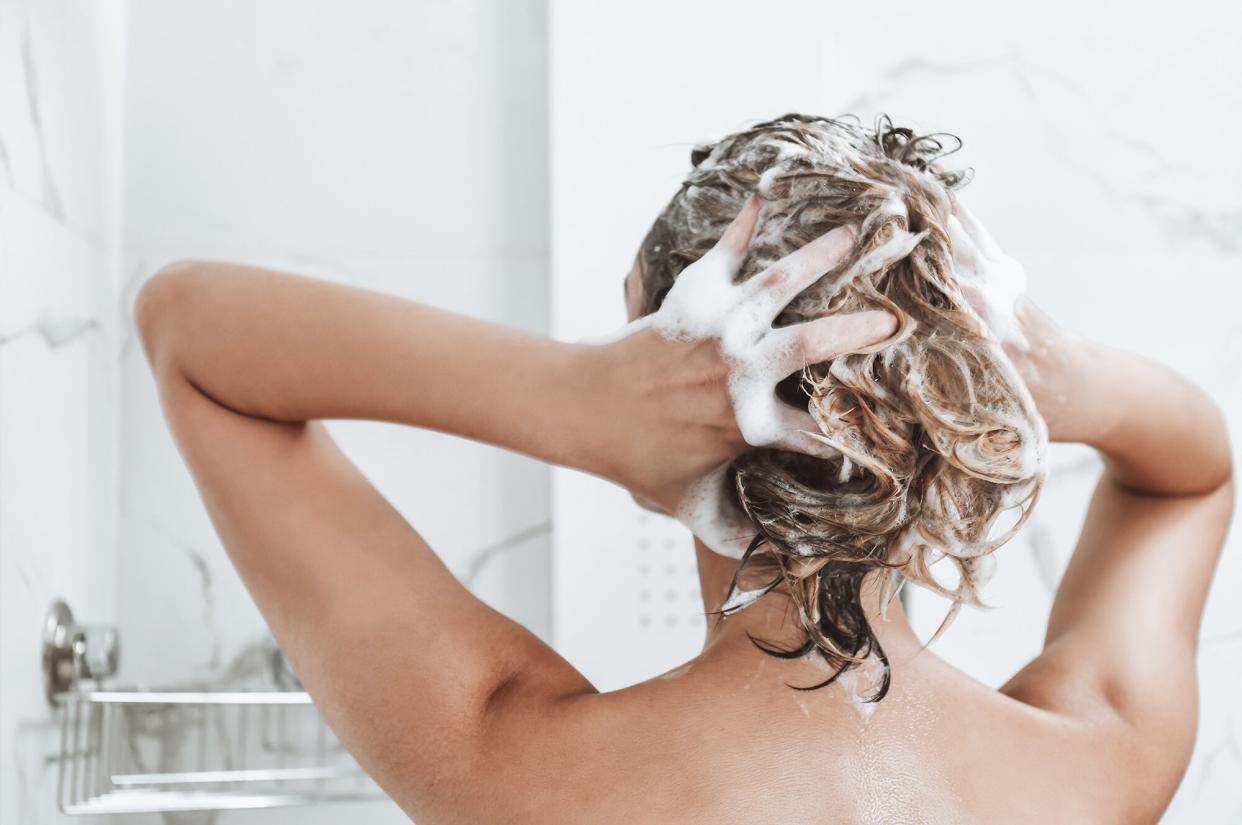Should You Really Avoid Sulfates and Silicones in Hair Care Products?

AleksandarGeorgiev / Getty Images
There's a lot of fuss surrounding the sulfates and silicones in our hair care products. Many well-known formulas on the market have contained both of these common chemicals for decades. The million-dollar question, however, is whether sulfates and silicones are truly the villains they are portrayed to be. For answers, we spoke with several hair care experts.
Related: The Best Sulfate-Free Shampoos
Why are sulfates in hair care products?
Sulfates are a cleansing ingredient that aid in the removal of unwanted dirt, oil, and buildup; these sulfuric acid salts fall into the anionic surfactant category of cleansers. Many shampoos contain these chemical cleansing agents, which ultimately create that soapy lather we love. However, Nubia Rëzo, a master hairstylist and the founder of Rëzo Hair Care, cautions that while sulfates effectively remove oil and dirt, they can also dry out the hair.
How do silicones impact hair care products?
Silicones are synthetic polymers (they originate from sand!) that are well-known for their ability to seal in moisture. Frederic Fekkai, a celebrity hairstylist and the founder of FEKKAI, explains that silicones form a microscopically thin and flexible coating on hair, creating a barrier against frizz and humidity while locking in nourishing moisture when applied to damp strands; they are generally found in conditioners and leave-in products. While silicones are often used to promote shiny hair, Rëzo warns that they can cause more harm than good if they build up on the hair follicle and damage natural curl patterns. When formulated well, however, they deliver shine, lubrication, glide, slip, conditioning, and detangling benefits, notes Trey Gillen, hairstylist and creative director of haircare at SACHAJUAN.
It's also important to understand the difference between the three types of silicones, explains Gillen. Non-soluble silicones, which are more difficult to remove, fall into the "bad" category; water-soluble silicones, which wash away with ease, and evaporating silicones (these evaporate from the hair 10 minutes to two hours after application) are better for your hair. Identifying these on your products' ingredient lists is simple, adds Gillen: "A good rule of thumb is that most ingredients ending in '-cone' are non-soluble silicones, while ingredients containing the prefix 'PEG' are usually water-soluble," he says. "Evaporating silicones are easier to spot because there are just three common names: cyclomethicone, cyclopentasiloxane, and cyclomethicone."
Is it ever okay to use hair care products with sulfates and silicones?
Sulfates and silicones have been put under the microscope in recent years—but according to Fekkai, it's important to understand how these ingredients work (and then decide if they work for you) before we banish them from our routines. Sulfates, for example, have been safely used in shampoos and skin cleansers for centuries; and while they can strip natural oils from the hair and scalp, leaving you dry, frizzy, and irritated when they are over-utilized or poorly formulated, they can be beneficial when included in high-quality products, notes Gillen. The same goes for silicones—quality matters. Yes, silicones have the potential to build up on the follicle, leading to dullness and greasiness at the crown, but the issue isn't always the ingredient or even its grade—in Fekkai's opinion, these negative effects often have more to do with improper product selection and ineffective cleansing. It's also personal, he explains—silicones work well with certain hair types (like curls and coils!), but not with others (those with fine, straight hair might want to steer clear).
Hair types and application methods aside, it's always important to start with a quality product. "Sulfates and silicones exist on many levels of quality and refinement," explains Gillen. "Meaning, high quality and refined sulfates and silicones are acceptable to use in the hair without causing negative effects. Unrefined and low-grade silicones and sulfates are extremely damaging and harmful to the hair." As for how to separate the good silicone- and sulfate-containing hair formulas from the bad? Price point is an accurate indicator, he explains. "The higher the quality, the more it costs to produce," he says, noting that pricier formulas are, more often than not, formulated better than budget ones.
How can you find "hidden" sulfates and silicones on product labels?
If you ultimately determine that sulfates and silicones aren't for you, you'll want to carefully scan every hair products' ingredient list. Rëzo points out the words "sulfate" or "silicone" will not explicitly appear. While silicones will be listed via the aforementioned monikers, sulfates will appear as sodium lauryl sulfate (SLS), lauroyl isethionate (ALS), and sodium lauryl ether sulfate (SLES). Both Fekkai and Rëzo agree to avoid shampoo formulas with these additions, because they say cleansers formulated with sulfates strip hair and color more often than not. As for silicones? First, determine whether or not your hair type is compatible with this ingredient—then decide whether or not to nix it from our regimen. "A person with curly, coarse hair will have a completely different experience than someone with fine, limp hair when using a silicone-based product," says Fekkai.

